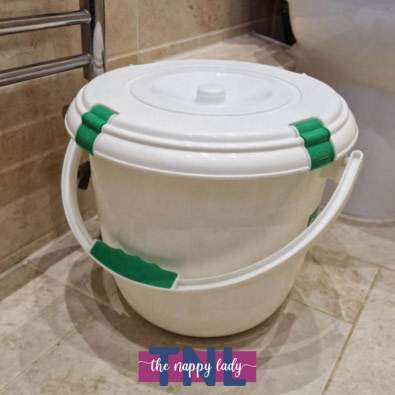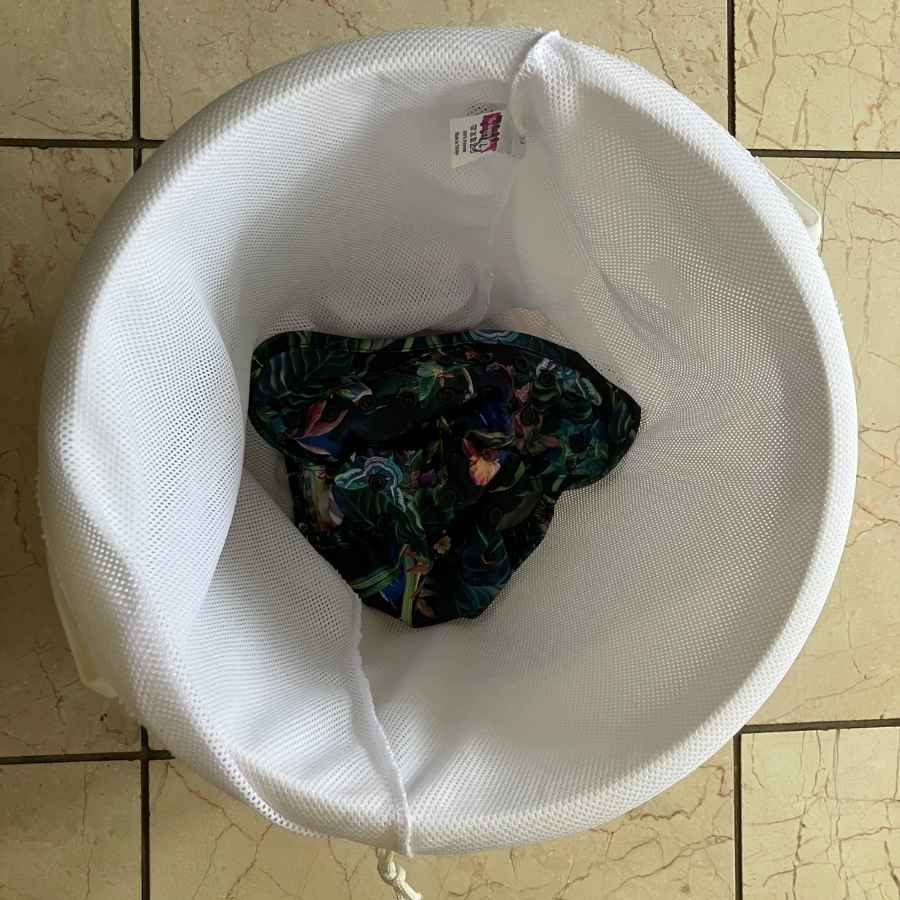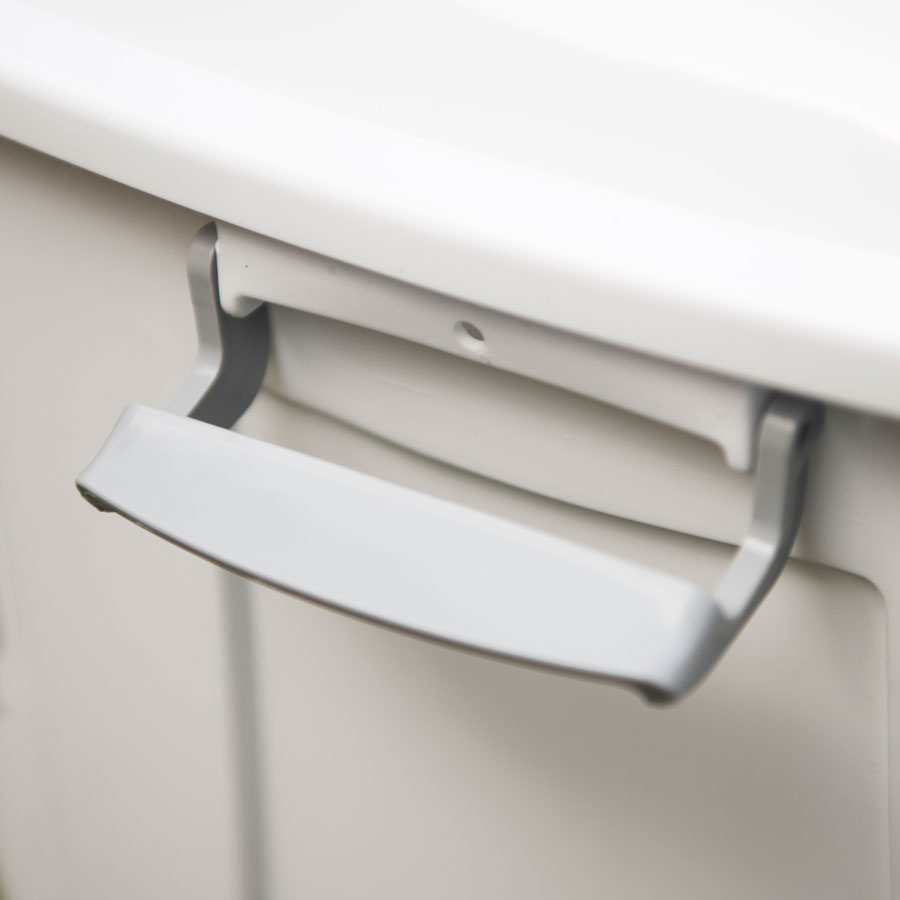Using a Nappy Bucket

As with everything else to do with reusable nappies, there are no rules on what sort of nappy bucket to use, or how to use it.
Do I need a nappy bin for reusable nappies?
A nappy bin or a wet bag is essential if you are using reusable nappies as you need to store soiled cloth nappies before you are ready to wash.
It doesn't have to be a nappy bin it could be a wet bag instead. It is also possible you could put soiled reusable nappies straight into the washing machine however that method tends to be used by large families who are washing daily.
What is a nappy bucket?
A reusable nappy bucket is simply a bucket with a well-fitting lid. Our most popular nappy bucket has a tight fitting lid but no clips, however if you'd prefer a lockable bucket to secure against unwanted exploration the Tots Bots bucket we sell offers these.
If you have two children in cloth nappies at the same time you may benefit from a larger nappy bucket. One of our advisors had two under two in cloth for a period, and found two buckets invaluable: one upstairs and one downstairs so there's always one close by and you aren't worrying about carrying a dirty nappy or baby around to the bucket!
I need an extra large nappy bucket...
A standard nappy bucket you'll find on the high street will only hold 8l which is really quite tiny. Our most popular nappy buckets are 16l however we also stock an extra large nappy bucket by Mother-ease which is a fabulous 25l.
I don't have room for a nappy bucket what can I use instead?
If you do not have much space at home, then a great option you can use a large waterproof wet bag in which to dry pail your cloth nappies - this can simply be stored in the laundry basket or hung off a hook on the back of a door. Just don’t forget to wash the nappies!
Whatever method you use, before putting dirty nappies in the bucket/bag, rinse off any poo which has escaped the nappy liner. Fresh poo is a lot less offensive to deal with than stale poo!
Best nappy bins and wet bag storage options:
What is a nappy laundry mesh bag for?
A nappy mesh laundry bag is for lining your nappy bucket and making it quicker and easier to get the dirty nappies out from your reusable nappy bucket and into the washing machine.
FAQ's |
|---|
How do you keep a nappy bucket from smelling?To make the nappy bucket smell nicer, add a couple of drops of lavender or tea tree oil to the top of the lid. Thoroughly clean the nappy bucket with hot soapy water and disinfectant every time you put a nappy wash on. The Mother-ease nappy bucket comes with a replaceable carbon filter to help remove odours and to keep the nappy bucket smelling fresh. |
How long can you leave cloth nappies before washing?You should aim to wash every 2 days. You would not want to wash them longer than every 3 days other than in exceptional circumstances as leaving them longer is not good for the nappy fabric. |
Can I put my used baby wipes into the nappy bucket?Yes you can store your used reusable baby wipes in your nappy bucket along with your nappies. They will be washed together. If you use disposable baby wipes these must be put in the rubbish bin as they are not designed to be washed. |
Do I need to rinse reusable nappies before they go into the nappy bucket?No you don't if they are only wet nappies. Pooey nappies should have the poo removed first before they go into the nappy bucket. |
How do I store soiled nappies in a nappy bucket?
There are two common approaches to using your bucket while the dirty nappies are waiting for the wash. You can soak the soiled nappies until wash day, or put them straight into the empty bucket (known as 'dry pailing' or "dry pail"). Below we discuss the pros and cons of both.
Soaking Reusable Nappies
Advantages
- By keeping your nappies wet, stains do not set and so no prewashes are needed.
Disadvantages
- Many nappy manufacturers actively discourage soaking, especially as nappies now contain more fragile components such as PUL and elastic.
- If you soak using any sodium bicarb, vinegar, bleach or harsh stain removers your warranty will become invalid.
- The dirty water will need to be tipped down the loo or emptied into the sink or bath - whatever suits your plumbing arrangements. You might not consider the sink/bath very hygienic if you also use the sink for cooking or personal washing purposes.
- There is a risk of the bucket being tipped over or - conceivably - a child sticking their head into it when full. You can avoid this by placing the bucket out of reach. The best position is inside the bath, where it is not a big problem if it does get tipped over.
If you decide to wash alternate days, change the water in the nappy bucket on the night in between. This prevents it from smelling too strongly.
Wraps should not be soaked or need sanitising agents, as the sanitising agent may affect any waterproofing layer. Rinse them clean as soon as you can, if necessary, to avoid staining and then keep them to one side ready for washing. You will have more problems with wraps staining if you use pad folded rather than pinned or shaped nappies.
Below are nappy sanitiser and specialist detergent options:
Dry Pailing Reusable Nappies
Advantages
- Your modern cloth nappies will not smell as strongly when you come to empty the bucket, and there is no need to tip away dirty water into a sink or bath. This also makes it easy to transfer the nappies into a front loading washing machine without the risk of drips.
- Dry pailing is excellent where space is limited, because you can use a waterproof wet bag rather than a bucket.
- You can keep soiled wraps in the bucket with your nappies until you are ready to wash them.
Disadvantages
- Because the nappies have not been stored in liquid, they will dry to some extent, and any poo stains will set quite easily. This is where the initial rinse cycle in your washing routine is important, to rinse away the worst bit that may have become stuck while waiting for wash day.
Does dry pailing smell?
In warm weather in particular, you will find that there can be a bit of a “hamster smell” to the nappy bucket if dry pailing. You can mask this effectively by running half an inch of water in the sink to which a couple of drops of lavender oil have been added, then soaking a folded muslin into this mixture. Wring the muslin out loosely and then leave it over the top of your nappies in the bucket - as you add additional nappies, place them underneath this cover.
You’ll have the nicest smelling nappy bucket in the area!
Wet Nappy Bags
For storage when out and about you will need a wetbag. We have a wide range of nappy wet bags in our store. Please visit our wetbag category to see the full range.
Changing Frequency
If you are new to reusable nappies and need some guidance on change frequency read our article how often to change nappies.


.jpg)










.jpg)










